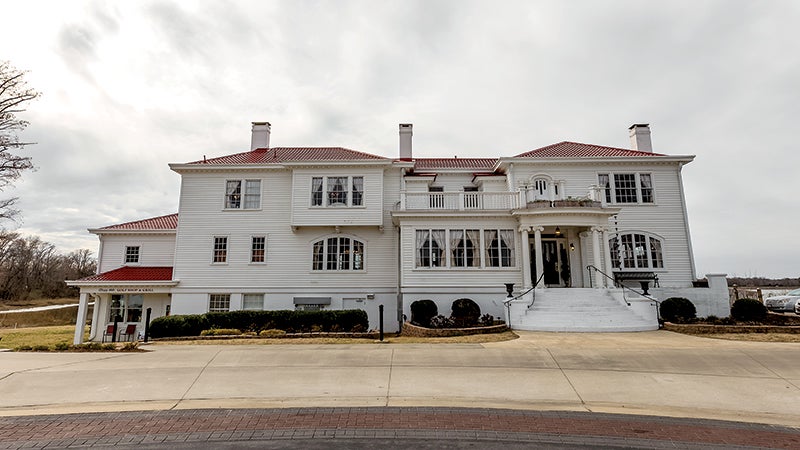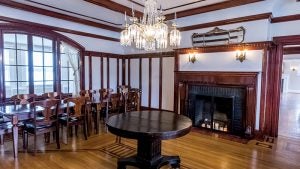A gem restored
Published 12:40 am Monday, March 27, 2017

- The Obici House is an imposing presence by the green of the 18th hole at Sleepy Hole Golf Course.
When Amedeo Obici, who founded Planters Nut and Chocolate Co., moved to Suffolk from Scranton, Pa., in 1924, he wanted to build a home that would evoke memories of his boyhood days in Oderzo, Italy.
Bay Point Farm, a 263-acre property on the banks of the Nansemond River, became his home, and he set about to make the dream come true, moving an 1870s-era farmhouse to the west and making it the core of his new home.
The dwelling, according to the Library of Congress, “was expanded to the north and south and reoriented to the east to take advantage of the water view over the river.”
That expansive view of the river — and, especially, the sunsets that are framed there — has long been iconic to Hampton Roads golfers, who have enjoyed it as they have sought to make putts on the 18th green at Sleepy Hole Golf Course, which now occupies much of the space that was once Bay Point Farm.

A casual observer would have a hard time telling where new pieces have been used to replace damaged old parts of The Obici House.
In the years since the death of the businessman and philanthropist who built it, though, The Obici House has come to be iconic in its own right.
But there was a time, not that long ago, when the future of this unique piece of Italian Revival Renaissance architecture was sorely in doubt.
Back in 2010, when Suffolk businessman James R. “Ronnie” Rountree was selected by the city of Suffolk to lease and renovate the house, much of it was in disrepair.
Time and weather had taken their toll on both the exterior and interior, termites had long been the only residents and historic preservationists had seriously worried that this gem might be demolished in the name of progress.
But a long project of loving restoration brought The Obici House back from the brink.
“We’ve really taken a love to this project,” Rountree said in a June 2011 interview with the Suffolk News-Herald.
J.T. Belcher, director of golf operations at Sleepy Hole Golf Course, was there for much of the project, working out of a double-wide mobile home that served as the pro shop at the time.
“Watching everything come together — it was a very fun project to watch,” he said recently, recalling “just how bad it was” and comparing that state of affairs to the restored glory of the old home of Amedeo Obici and his beloved wife, Louise.
“It’s just amazing,” Belcher said.
Contractors took about three months working on just the front porch area, Rountree said in 2011, while the work was still ongoing. They had to remove 11 coats of paint from the front porch columns and caps before repainting and reinstalling them.
Moldings were removed and numbered from the interior so they could be put back exactly where they’d been removed from. Stained glass windows and chandeliers were removed piece by piece, cleaned and then replaced.
Today, The Obici House serves as an events venue and a sort of pop-up restaurant with weekly dinners. A golf pro shop and grill occupy new and renovated space in what would have been the basement of the old structure. And dozens of weddings are held there each year, according to Terry Tagg, director of operations at the venue.
With all the evidence now gone of the structure’s previous decay, she says, The Obici House is now a place where brides and diners alike find themselves caught up in a different era.
“The house puts everybody in a good mood,” she says. “I love it here.”
And even though the golf course’s 18th hole is consistently ranked as one of the most challenging in Southeast Virginia, golfers, according to Belcher, seem to love to finish their rounds with folks watching from the house.
But, especially as the afternoons wind down, those folks might not be watching the golfers.
“I’ve got the best location,” Belcher says. “The sunsets are unbelievable.” ←






